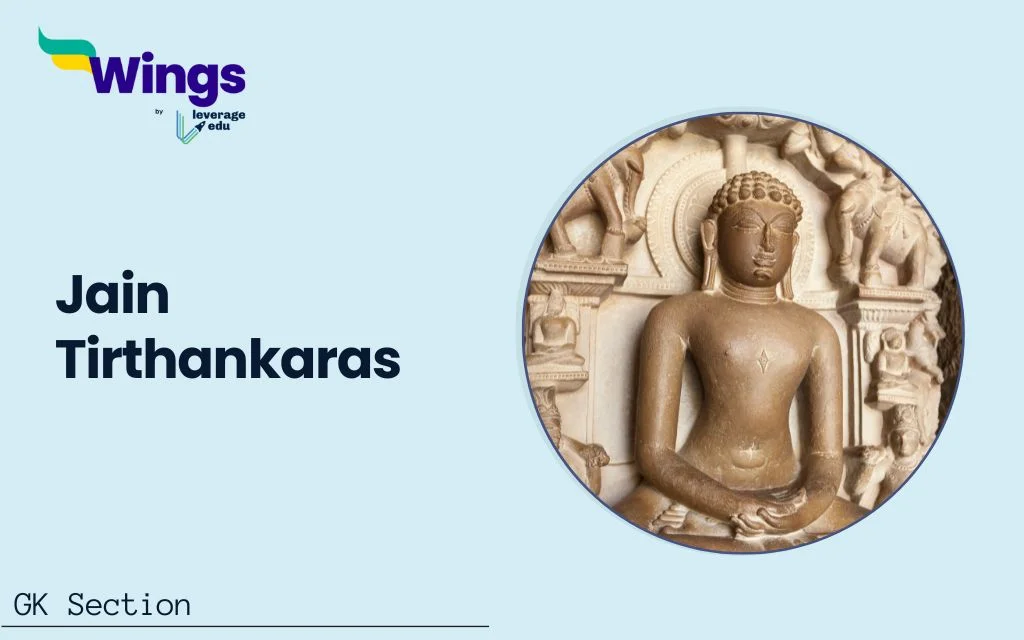Jainism is among the oldest religions in the world. Tirthankaras is a term that is associated with Jainism. Tirthankar is made up of two words: “Tirtha” and “Samsara”. Samsara means the worldly life, and Tirtha is a site of pilgrimage. In Jainism, a Tirthankara is someone who has successfully passed through the cycle of birth and death and created a way for others to do the same. Tirthankaras is referred to as “Jin” in Jainism, which means “conqueror of all likelihood.” There are twenty-four Tirthankaras in Jainism. This is an important topic for the UPSC– Art and Culture examination. Read the complete article to learn more about Jain Tirthankaras, which will help you to know about the list of Jain Tirthankara.
Contents
Meaning of Tirthankara
A Tirthankar is not the form of a god. It is a common soul who was born into this world and became a Tirthankar through strict devotion, calmness, and meditation. Consequently, the Tirthankara is not defined as an Avatar (a god), but rather as a pure and developed soul. Throughout human history, there have been great teachers in Jainism known as Tirthankaras. After reaching the peaks of spiritual achievement, they imparted their knowledge to others on how to achieve spiritual loyalty.
Jains honour five significant occasions in a Tirthankara’s life. We refer to them as Kalyanak or fortunate events. They are as follows:

1. Garbha Kalyanak: This marks the moment when the soul of the Tirthankar enters the mother’s womb after leaving its previous life.
2. Janma Kalyanak: The soul of the Tirthankar is born at this time.
3. Diksha Kalyanak: At this point, the Tirthankar’s soul gives up everything materialistic and transforms into a monk or nun.
4. Kevalgyan Kalyanak: This is the moment when the soul of the Tirthankar fully achieves total knowledge. The Tirthankar addresses the Jain path of purification and liberation, making this the most important event for the entire Jain order.
5. Nirvana Kalyanak: This is the moment when the soul of a Tirthankar is free from this worldly physical existence and transforms into a Siddha. On this day, the Tirthankar’s soul fully destroys the four Aghati karmas and achieves salvation- a state of freedom from all suffering.
Also Read: Jainism Philosophy UPSC: Philosophy and Literature
List of Jain Tirthankara
For thousands of years, the 24 Tirthankaras have lived and taught the Dharma (righteousness) law. Remarkably, each Tirthankaras stand for a symbol.

Tirthankaras of the Present Cosmic Age
The names, emblems and colours of the 24 tirthankaras of this age in chronological order are:
| Sl. No. | Tirthankara Name | Symbol | Birthplace | Colour |
| 1 | Rishabhanatha (Adinatha) | Bull | Ayodhya | Golden |
| 2 | Ajitanatha | Elephant | Ayodhya | Golden |
| 3 | Sambhavanatha | Horse | Shravasti | Golden |
| 4 | Abhinandananatha | Monkey | Samet Sikhar | Golden |
| 5 | Sumatinatha | Heron | Ayodhya | Golden |
| 6 | Padmaprabha | Padma | Samet Sikhar | Red |
| 7 | Suparshvanatha | Swastika | Samet Sikhar | Golden |
| 8 | Chandraprabha | Crescent Moon | Chandrapuri | White |
| 9 | Pushpadanta | Crocodile | Kakandi | White |
| 10 | Shitalanatha | Shrivatsa | Bhadrak Puri | Golden |
| 11 | Shreyanasanatha | Rhinoceros | Samet Sikhar | Golden |
| 12 | Vasupujya | Buffalo | Champapuri | Red |
| 13 | Vimalanatha | Boar | Kampilya | Golden |
| 14 | Anantanatha | Falcon | Ayodhya | Golden |
| 15 | Dharmanatha | Vajra | Ratnapuri | Golden |
| 16 | Shantinatha | Antelope or deer | Hastinapur | Golden |
| 17 | Kunthunatha | Goat | Hastinapur | Golden |
| 18 | Aranatha | Nandyavarta or fish | Hastinapur | Golden |
| 19 | Māllīnātha | Kalasha | Mithila | Blue |
| 20 | Munisuvrata | Tortoise | Kusagranagar | Black |
| 21 | Naminatha | Blue lotus | Mithila | Golden |
| 22 | Neminatha | Shankha | Dvaraka | Black |
| 23 | Parshvanatha | Snake | Kashi | Blue |
| 24 | Mahavira | Lion | Kshatriyakund | Golden |
Tirthankaras of the Next Cosmic Age
According to Jainism, the Utsarpini (ascending half-cycle) is the next cosmic age. It is predicted that during this half-cycle of Utsarpini, 24 Tīrthaṅkaras will be born. The following are the names of the 24 Tīrthaṅkaras of the next cosmic age:
| Sl. No. | Tīrthankara | Previous Human Birth |
| 1 | Rishabhanatha | Nabhi Raja |
| 2 | Ajitanatha | Muni Suvrata |
| 3 | Sambhavanatha | King Jitāri |
| 4 | Abhinandananatha | King Samvaranaraja |
| 5 | Sumatinatha | King Megha |
| 6 | Padmaprabha | King Vishvasena |
| 7 | Suparsvanatha | King Pratishtha Raja |
| 8 | Candraprabha | King Mahasena |
| 9 | Pushpadanta | King Sugriva |
| 10 | Satalanatha | King Dridharatha |
| 11 | Sreyaṃsanatha | King Shubhanasa |
| 12 | Vasupujya | King Vasupujya |
| 13 | Vimala | King Chandra |
| 14 | Anantanatha | King Dharanendra |
| 15 | Dharmanatha | King Bhojaka |
| 16 | Santinatha | King Nami |
| 17 | Kunthunatha | King Vijaya |
| 18 | Aranatha | King Taara |
| 19 | Mallinatha | King Siddhartha |
| 20 | Neminatha | King Samudravijaya |
| 21 | Parsvanatha | King Ashvasena |
| 22 | Mahavira | King Siddhartha |
| 23 | Nandi Vardhana | King Yasas |
| 24 | Mahabala | King Rishabha |
Related Posts
| Who Is The Founder Of Jainism? | Digambara Jain: Origin, Beliefs & Sub-Sects | Jain Councils: History, List and Reasons |
How To Prepare for UPSC Prelims? | Lord Mahavira: Real Name, Life and Teachings | UPSC Prelims Eligibility Criteria |
FAQs
Tirthankara is a common soul who was born into this world and became a Tirthankar by means of strict devotion, calmness, and meditation. Consequently, the Tirthankara is not defined as an Avatar (a god), but rather as a pure and developed soul.
The Tirthankara is not defined as an Avatar (a god), but rather as a pure and developed soul, who has achieved spiritual loyalty.
The first Tirthankara of Jainism was Rishabhanatha, sometimes referred to as Adinatha and Adish Jina.
This was all about the “Jain Tirthankaras”. For more such informative blogs, check out our UPSC Exams Section and Study Material Section, or you can learn more about us by visiting our Indian exams page
 One app for all your study abroad needs
One app for all your study abroad needs














